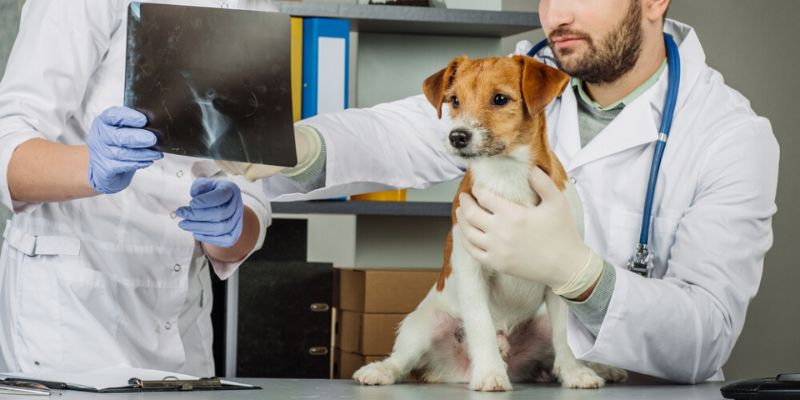Understanding Insuring Multiple Pets with Pet Health Insurance
Caring for some animals can be expensive, but pet insurance can help you reduce medical costs. By enrolling multiple dogs or cats with the same insurance company, pet owners can also save money.
The cost of multi-pet insurance varies by the insurance provider, however, some providers can give you a discount of up to 10% if you buy insurance for multiple animals through them. Here’s what you need to know about Insuring Multiple Pets with Pet Health Insurance. Continue reading the article below.
Contents
Why own Insuring Multiple Pets with Pet Health Insurance?
Many pet owners find it difficult to decide whether to purchase pet insurance because they don’t like the concept of including more expenses in their monthly budget. Well, buying pet insurance has both advantages and disadvantages. Maintaining your insurance requires a small monthly premium, which you’ll be happy to have if you need to take one of your animals away immediately or if an unforeseen expense occurs. in a regular appointment.

The cost of caring for multiple pets can pile up, and millions of households have more than one pet. A dog is said to cost up to $40,000 to care for over its lifetime, with veterinary bills making up a sizable portion of that cost. For instance, depending on the care your cat requires, an emergency vet visit could easily cost more than $3,000. Having many pets greatly increases your chances of being financially burdened.
Pet insurance is an important investment that can protect you from unforeseen and sometimes exorbitant bills at the vet if you’re one of many with several family members. four legs at home. This ensures that your dog always gets the treatment they require at the right time, and that cost is never a barrier to care.
The Benefits Of Multiple Pets with Pet Health Insurance
Early Symptom Recognition
Regular veterinarian appointments also provide you with the chance to catch diseases or injuries in the early stages. Similar to human illnesses, it is far simpler to treat a pet’s problem if it is identified early on before it worsens.
This is particularly true for catastrophic diseases like cancer, as well as for degenerative diseases like diabetes or hip dysplasia. To avoid irreparable harm, it’s also critical to identify inherited problems as soon as feasible.
If your insurance coverage covers the expense of diagnostics or treatment, you won’t have to worry about it. All the necessary tests may be performed by your veterinarian to confirm your pet’s sickness. Additionally, a second pet that becomes ill will be able to have the same superior treatment.
Give Your Pets Regular Attention

The majority of experts agree that animals should see a veterinarian at least once a year, ideally more often. Smaller animals, especially puppies, and kittens, may need monthly vet visits.
Pet owners with Insuring Multiple Pets with Pet Health Insurance see the vet more often. This is great! A 2016 study by an insurance company found that insured pet owners visited the vet nearly twice as often as those without insurance.
This has an easy justification. If you have insurance, you can go to the vet without worrying about how an unforeseen expense could affect your finances.
This means your dog will be evaluated for health and fitness more often. In addition, they will receive standard care more often, including grooming, vaccinations, parasite control measures, and teeth cleaning.
Many of these costs may even be covered by your plan if you have coverage with a health care benefit supplement. This can significantly reduce healthcare costs for some animals, especially puppies or kittens.
Find Out Your Coverage in a Crisis
When you have multiple pets, Insuring Multiple Pets with Pet Health Insurance is essential because, my god, you have more than one emergency, which could cost you thousands of dollars.
While less common, it’s not uncommon for all of your pets to experience an emergency at the same time. Accidental poisonings can take a toll on an entire family, and exposure to environmental hazards can harm every living thing that lives there.
However, keep in mind that one in three pets needs emergency treatment every year even if you don’t have multiple emergencies at once. Pet insurance can save you thousands of dollars if one or more of your dogs becomes seriously ill or injured, even if you have the financial resources to save money each month on visits future.
How does Multi-Pet Insurance Work?

You may believe that “Insuring Multiple Pets with Pet Health Insurance” refers to a single coverage for all your animals, but this is often not the case. While you can manage coverage from one account, when you cover multiple pets, you’ll typically purchase individual pet insurance plans for each pet. Besides, multi-pet insurance often works in a similar way to individual pet insurance.
Breed, age, location, and other criteria are often taken into account by pet insurance providers when calculating insurance costs. The next pet you want to cover will require the same process and you will choose an appropriate plan that best suits your needs.
You can get pet insurance with different rates of return, deductibles, coverage limits, and monthly premium payments. However, insurance companies often allow you to manage multiple policies from one account, effectively connecting the policies. As a result, you can centrally manage pet claims and payments for different packages.
How Much Does Insuring Multiple Pets with Pet Health Insurance Cost?
Depending on the insurance provider and the advantages included in the plan, multi-pet insurance premiums might change. The cost of multi-pet insurance is often determined by a number of factors, including:
- Age: Younger animals are less expensive to cover, but as they become older, pet insurance premiums go up.
- Breed: Some breeds are more prone than others to particular injuries and illnesses. For instance, compared to other pet breeds like Cocker Spaniels, Shepherds are more likely to require pricey surgery for hip dysplasia. Costs associated with pet insurance reflect this.
- ZIP code: The cost of veterinarian treatment varies depending on where you live. Because of this, insurers take your ZIP code into account when calculating the price of your coverage.
- Deductible: A deductible is the amount you must pay before your insurance will pay your medical bills. Lowering your deductible decreases the cost of your insurance.
- Compensation percentage: The majority of pet insurance providers allow you to choose the policy’s reimbursement percentage. The percentage of your veterinary expenses that your insurance will cover after your deductible is this sum. The typical reimbursement percentages are 70%, 80%, or 90%.
- Coverage cap: While other policies provide limitless coverage limitations for a premium fee, certain pet insurance plans may include yearly coverage restrictions like $5,000.
- Policy type: An accident-only plan that just covers emergencies will probably be more expensive than a comprehensive plan like accident and illness insurance.
- The number of pets: You will pay more for coverage if you insure more animals.



